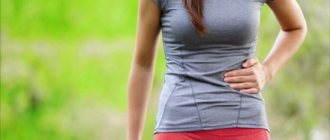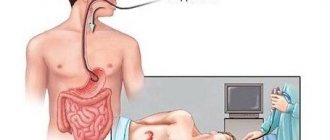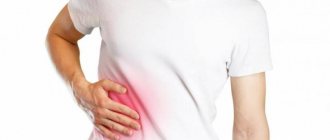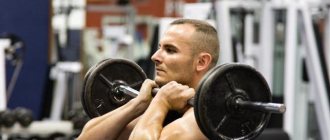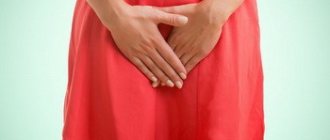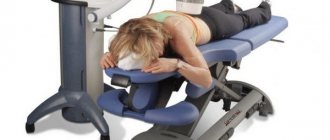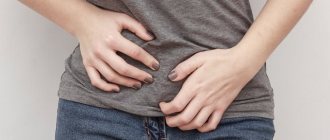General information
Why the left side hurts can be explained by the development of many diseases and pathologies. Discomfort and pain are associated with diseases of those organs located in the left hypochondrium. These are the spleen , the left part of the diaphragm, part of the stomach , pancreas , intestinal loops , pole of the left kidney . When the functions of these organs are impaired, cramps, spasms and pain occur in this area.
Side pain during pregnancy
Pregnancy opens up new emotions and sensations for women that were previously inaccessible. Including sometimes negative and painful ones. Discomfort on the left, right or both sides is no less a common complaint of expectant mothers than swollen legs or back problems. The pain can be of a completely different nature: sudden, dull, sharp, aching, sharp, barely noticeable. Attacks also vary in duration: fleeting or chronic.
There may be several reasons for this, ranging from the growth of the fetus to the appearance or exacerbation of diseases in the mother.
Pain in left side
Discomfort on the left side in the first weeks of pregnancy can be explained by the rapid development of the fetus and, as a result, the growth of the uterus. It begins to compress all adjacent organs. The pain is mainly concentrated in the lower side. They are fleeting in nature and more like tingling sensations. The main danger at this stage is that the threat of miscarriage has similar symptoms. If the pain does not go away within half an hour or more, and begins to affect the right side, then you should urgently consult a doctor or call an ambulance.
As the duration of pregnancy increases, the load on the body also increases. Unpleasant sensations in the left side are now mainly associated with increased work of the spleen, which is still under pressure from the enlarged uterus. Now is the time for a woman to gradually reduce physical activity to a minimum and avoid lifting weights of more than 4 kg.
If the expectant mother is accustomed to a sports lifestyle, then before attending special classes for pregnant women, she needs an examination and recommendations from a doctor.
When there are only a few weeks left before the baby is born, the joy of upcoming motherhood can be overshadowed by new reasons for discomfort in the left side. First of all, due to intestinal problems. Any deviation from the prescribed diet can cause long-term aching pain.
Therefore, it is especially important to exclude fatty, salty and smoked foods from a woman’s diet. After all, expecting a child should be accompanied only by positive emotions
Pain in right side
Throughout pregnancy, there can be many reasons for discomfort in the right side. This includes both increased pressure on organs and old problems in a woman with the liver, gall bladder or pancreas. And also the diaphragm, intestines, kidneys or ureters.
In addition to heavy loads on all body systems and the possible development or exacerbation of diseases, a factor causing pain in the right side of a pregnant woman may be an uncomfortable position for the baby. Such sensations are short-term in nature, but are often repeated. They can be described as an aching, muffled pain closer to the lower abdomen. To get rid of it you need to lie either on your left side or on your back.
If pain in the right side resembles sharp lumbago that affects the lower back, and occurs mainly after eating, then we can again talk about poor nutrition. As a rule, such attacks are accompanied by problems with stool, severe nausea and even vomiting.
In order to avoid such disruptions in the functioning of the digestive system, a woman should tell her doctor in detail about her problems. He will be able not only to adjust the pregnant woman’s diet with a suitable dietary table, but also to select medications for the treatment of dysbiosis.
Gradova Olga, especially for the site 9 months of happiness.
2014, 9 months of happiness. All rights reserved. Any use of materials from the site 9 months of happiness without an active link to the source open for indexing is prohibited!
No comments yet!
Popular articles
Babies born 36 weeks
birth at 35-36 weeks 1. Guest | 15.03, 21:46:59 I gave birth. The child was premature, cried immediately, but was light and strong.
Nausea at 36 weeks of pregnancy
Nausea before childbirth Around the 36th week of pregnancy, the period before childbirth begins. At this point the child has had enough.
Estradiol during pregnancy (E2), along with progesterone, is one of the most important hormones necessary for the maintenance and development of pregnancy. His level.
Pain in the left side of the abdomen - what is it like?
Initially, you should determine the boundaries of the hypochondrium area. This is the left side of the abdomen - the left quadrant at the top, which is located under the ribs. Accordingly, what exactly hurts in this part of the abdomen in a man, woman or child, and which doctor needs to be contacted, can be determined by the nature of the pain, the period and circumstances of its occurrence. If the pain manifests itself in the upper part of the abdomen in the center and radiates to the left side, we can talk about the development of various diseases.
Stitching pain that occurs during exercise
Those who are interested in why it stings when running, and whether it is dangerous, should take into account that a similar symptom is also observed in healthy people. If tingling only periodically develops during movement, that is, during active physical activity, then this phenomenon can be considered normal. Such symptoms quickly disappear and they only indicate that the adult or child did not warm up enough before starting sports and moved very abruptly.
Before starting classes, it is necessary to conduct a thorough warm-up so that the body gradually adapts to the activation of blood circulation. Stitching pain sometimes develops when walking too actively, which can be prevented by slowing down the pace.
This condition is not dangerous if it hurts only during exercise and this happens to healthy people who do not suffer from heart disease. However, even healthy people who tense too much, when such sensations develop, need to stop and relax, take a deep breath. As you exhale, you should press your palm on the place where the pain develops and sharply lean forward. You can repeat these steps several times.
It is also important to ensure that when the lesson is taking place, breathing is deep, since shallow breathing causes small excursions of the diaphragm.
Severe sharp pain on the left side can also be observed if a person starts exercising after eating. It is important that at least an hour and a half pass after eating before starting classes, as the digestive system must cope with the digestion process.
Dagger sharp pain
If the burning sensation develops suddenly and is not associated with exercise, then you should seek medical help. A sharp burning sensation under the ribs, as well as a burning sensation in the lower abdomen, may indicate a rupture of the spleen, renal pelvis, perforation of the stomach wall and small intestinal loops. Also likely in this case are acute pancreatitis and abdominal myocardial infarction .
Acute pain after injury
If the occurrence of pain in this area is noted when inhaling after an injury, accident, or fall, then there is a possibility that the person’s internal organs are seriously damaged. In this case, it is important to immediately contact specialists, as there is a possibility of a threat to life.
Dull aching pain in the left side
Diffuse, aching pain, which manifests itself over a long period of time and occurs periodically, may be a sign of the development of a chronic disease of the gastrointestinal tract. There is likely inflammation in the stomach - gastritis , as well as pancreatitis , cholecystitis , etc. To determine what may hurt in the left side, or to exclude the development of pathologies, it is important to consult a gastroenterologist, conduct tests and studies. Also, nagging pain in the left hypochondrium develops with certain blood pathologies , bacterial infections , sepsis , and systemic diseases .
It's a dull pain
If there is constant aching and tugging in the hypochondrium, then the causes of heaviness under the ribs may be associated with the development of duodenitis or sluggish colitis . If the patient immediately experiences nausea and vomiting, then we can talk about the likelihood of gastric ulcer .
If the pain is not associated with problems in the functions of the gastrointestinal tract, a pre-infarction condition , angina pectoris , or coronary heart disease .
Why does the lower abdomen hurt in women on the left: possible diseases
If you are feeling unwell and trying to figure out why the lower abdomen hurts in women on the left, as well as what to do in this situation, read the article to the end. It contains all the information necessary for self-diagnosis and step-by-step instructions for further actions. It will help you not waste time and make an appointment immediately with the right specialist.
Causes of discomfort
You need to know: a woman has reproductive organs on the left side of her lower abdomen: the fallopian tubes, the left ovary (another name is the appendage) and the left region of the uterus. However, from the gastrointestinal tract organs located above them, discomfort sensations, radiating, can descend to the left iliac part.
They can be pulsating or single, be constant or periodic, and also occur only at certain times of the day.
There are many reasons for such pain:
- gynecological;
- problems of urology;
- neuralgic in nature;
- pregnancy;
- diseases of the endocrine system;
- gastrointestinal diseases;
- injuries, etc.
Therefore, you need to relax and try to determine the type of pain. Further diagnosis of unpleasant sensations largely depends on this.
Nature of pain
To correctly diagnose the disease, the pain symptom must be correctly described and classified.
In order to independently accurately determine the nature of the pain, you need to renounce the painful state as much as possible and remember:
- have similar sensations occurred before;
- whether the type and location of pain have changed since then;
- what events usually precede the onset of illness (for example, physical activity or exposure to rain, etc.);
- what additional symptoms accompany the pain?
This will help to more accurately determine their origin and type.
The pain is dull, closer to aching
If the pain is tolerable, and the lower abdomen aches rather than tugs, then most often such sensations signal problems with the stomach or pancreas.
In this case, the malaise will be accompanied by additional symptoms:
- nausea and sometimes vomiting;
- subfibrile temperature (from 37 to 37.5).
The condition can be caused by eating provoking foods (for example, a lot of sweets at night, too fatty foods, especially when cold).
The cause of the malaise may be inflammation of the left ovary, or gynecological pathology of the uterus.
Then the clinical picture is usually supplemented by:
- discharge with blood from the vagina;
- a slight increase in temperature is possible.
If both ovaries are affected, the pain is floating, moving from left to right and back.
The source of dull pain in the lower abdomen can also be simple cystitis. In the chronic form, aching sensations are accompanied by:
- frequent urge to urinate;
- discomfort in the vaginal area.
You can relieve the condition by taking a hot bath.
In addition, aching pain in the left lower abdomen in a woman can be associated with tumor formations, varicose veins, bowel dysfunction, and inflammation of the hemorrhoidal vein.
Left-sided pain in the pelvic area can also be caused by a number of bone pathologies - postural deformation, fractures, inflammatory-destructive diseases of the spine.
Pulling sensations below
Mild nagging pain most often indicates an inflammatory process in the genitourinary system, which may be accompanied by:
- suppuration;
- pain that radiates to the lower back.
In this case, the pain may also go down to the left leg.
Irritable bowel syndrome, which has additional symptoms:
- constipation or diarrhea;
- bloating.
Often, with this ailment, spasmodic pain is superimposed on the pulling sensations in the lower abdomen.
Also, the cause of periodically occurring nagging pain may be a strangulated hernia or an inflamed area in the sigmoid or rectum.
Strangulated hernia
Pelvic neuralgia resulting from varicose veins, hernial formations, and pinched nerves. She is accompanied by:
- pain in the back or perineum, aggravated by physical activity;
- fast fatiguability.
Nagging pain in the lower back often appears after intense experiences and as a result of prolonged stressful situations.
Cutting pain, sharp colic on the left side
Sharp pain, intensifying with palpation to the point of excruciating pain, may be anatomically justified torsion of the leg of the myomatous node (although in the normal state, neoplasms with uterine or ovarian fibroids do not cause pain, or easily tolerated discomfort is felt).
This anomaly may have additional symptoms:
- disturbance of uterine bleeding;
- constipation;
- dizziness;
- infertility.
If this is accompanied by rapid heartbeat, profuse sweating and lightheadedness, then surgical intervention is urgently required.
An ectopic pregnancy is easy to recognize by general signs:
- breast enlargement;
- pain in the mammary glands;
- toxicosis (nausea, vomiting).
An abnormality is diagnosed on ultrasound.
Ovarian apoplexy (sudden rupture of the epididymal capsule), indicated by:
- sudden pallor;
- pressure drop;
- heart failure;
- general weakness;
- dizziness.
If you suspect apoplexy, you must immediately call an ambulance and wait for doctors, taking a horizontal position.
Acute left-sided pain can also be caused by the presence of infections such as dysentery, salmonellosis, gastroenteritis, or the presence of kidney stones or an attack of appendicitis.
Cramping pain
Such wave-like pain effects are characteristic of endometriosis of the uterus (hormone-dependent disease with tissue growth beyond its normal location), ovary (cyst formations) and distant parts of the reproductive system, often accompanied by:
- bleeding coinciding with uterine bleeding;
- inflammation of the myometrium.
Temporary infertility often occurs due to endometriosis, but it is cured within a few months.
Pain occurs when there is a threat of miscarriage (with a possible pregnancy), which is additionally indicated by:
- scarlet-colored bloody discharge;
- sudden pallor;
- hypotension;
- weakness;
- discomfort in the anus.
This condition requires immediate hospitalization. The most common ones are discussed in the video, which can be viewed by following the link:
Diagnostics
In order to accurately determine the cause of the pain, you need to undergo a comprehensive examination prescribed by a specialist.
Typically it includes:
- Examination by a doctor (palpation and questioning of the patient).
- A general blood test (will show the presence of inflammatory processes in the body), laboratory urine analysis (required for urological problems).
- Ultrasound of the organ causing complaints.
- Additional methods: tests of liver and pancreatic enzymes, as well as radiographic and endoscopic studies.
Based on the results of the examination, an individual scheme of therapeutic measures is developed for each patient.
Source: https://inet-health.ru/pochemu-bolit-niz-zhivota-u-zhenshchin-sleva/
Causes of pain in the hypochondrium on the left
Thus, answering the question of what may hurt in the left hypochondrium, the following reasons should be mentioned:
- cardiomyopathy , heart damage , heart attack ;
- gastrointestinal diseases - cholecystitis , ulcers , gastritis , pancreatitis , duodenitis , colitis ;
- intercostal neuralgia;
- enlargement or rupture of the spleen;
- tumors of internal organs;
- splenic infarction due to arterial thrombosis ;
- rheumatic manifestations;
- diaphragm injury, diaphragmatic hernia ;
- left-sided pleurisy , as well as left-sided pneumonia , developing in the lower part of the left lung.
Abdominal organs
It is necessary to take into account what is in a person’s hypochondrium area, as well as the nature of the pain (radiating to the back, aching, stabbing, just heaviness or discomfort) as well as factors that could determine the development of such pain (after eating, when inhaling during physical exercise). exercises, etc.).
The hypochondrium in front of a woman may hurt during pregnancy . In this condition, pain also appears in the left hypochondrium from the back due to the strong pressure of the enlarged uterus on the internal organs. Sometimes expectant mothers complain that there is a periodic tingling sensation in their side.
Pain in the left hypochondrium in the front can also be associated with previous injuries - in this case, you may feel discomfort in the front or a dull pain in the front, as well as severe, diffuse pain. In this case, the reasons should be immediately determined by a doctor.
Causes of pain
Left-sided discomfort in the side of men in the lower abdomen can be caused by disturbances in the functioning of two systems: the gastrointestinal and genitourinary.
What abnormalities can cause pain?
- pancreatic dysfunction.
The organ is located in the upper abdomen and takes part in digestion, producing enzymes and pancreatic juice necessary for the process of breaking down food.
Accompanied by diarrhea, discomfort in the epigastric region and increased body temperature.
Pain in the left side under the ribs, mechanism of occurrence
Why it hurts on the left side under the ribs also depends on the mechanism of development of such pain. This indicator serves as an additional sign in the diagnostic process, when the doctor tries to determine what hurts in the left side under the ribs, what is on the right and causes such sensations.
The following division of pain in this area is known:
| Nature of pain | Features of manifestation |
| Referred pain | They appear as irradiating from organs located far away. This may be pain due to left-sided pneumonia , heart attack , pleurisy , etc. Pain may radiate to the ribs in the left front, in the back behind, on both sides. |
| Visceral pain | Develop with intestinal spasms or in case of a violation gastric motility. Also, visceral pain is characteristic of the state of stretching of the muscle fibers of the gastrointestinal tract. A person may complain that his stomach hurts; if the disease progresses, pain can be felt in the center, as well as on the right side. The patient sometimes complains that there is gurgling in the stomach, pulling on both sides. In case of flatulence, a dull aching pain may be noted in the left and right sides. In the case of intestinal colic , there is a cramping pain, and a person may have complaints that it is stabbing in other nearby areas of the body - between the ribs in the middle, on the side, etc. |
| Peritoneal pain | Painful sensations appear constantly, and the pain is clearly localized, it can be cutting, sharp. It is provoked by irritation of the peritoneum, for example, a stomach ulcer . Such pains become more pronounced when inhaling, after eating, and sometimes when pressing. |
Despite the nature of the pain, what can cause such attacks under the ribs must be diagnosed by a doctor. When determining the causes, the specialist, first of all, takes into account what is located on the left under the ribs and is interested in the nature and mechanism of pain. It also finds out some important points - for example, is there pain in the ribs when coughing, does the rib hurt when pressed. Which organ is located in this area and where the pain develops will be determined by studies prescribed by a specialist.
Pain in front of the left hypochondrium
If pain is felt in the left side at waist level, then most likely we are talking about damage to the spleen or stomach tissue. However, if pain occurs at the waist level, then the doctor makes a differential diagnosis with myositis , myocardial infarction , colitis . If the pain shifts upward and it manifests itself in the center, then it is likely that diseases of the stomach are combined with diseases of the duodenum and gall bladder.
When the pain is behind
If a person complains that the left side of the back hurts, and this part hurts constantly, then there is probably a lesion in the left kidney. In this case, the pain from the back is strong.
If your kidney hurts, the symptoms may bother you constantly. What to do in such a case is determined by the doctor after making a diagnosis. Signs of the disease can be determined by ultrasound, and urine and blood tests also need to be performed.
It also hurts under the left shoulder blade behind or a little lower with osteochondrosis . The causes of pain in the scapula from behind may be associated with palpation of the paravertebral processes . Discomfort on the side of the scapula may occur with myositis .
Girdle pain, which is combined with unpleasant sensations on the left
A nagging girdle pain that appears where the left lower rib is located, moves from behind to the anterior abdominal wall, then one may suspect that the pancreas and pancreatitis . As a rule, with pancreatitis, the girdle pain in the stomach and back intensifies when inflammation develops. Then it is sharp, radiating to the back. It becomes a little easier for a person to sit or lean forward.
What does pain in the left side of the abdomen indicate, possible diseases and their treatment
Any pain worsens a person’s physical and psycho-emotional state. Some life-threatening diseases manifested by abdominal pain. A short-term occurrence of discomfort does not always indicate a serious illness. You should worry if:
- the pain is very severe and occurred spontaneously;
- slight discomfort is felt in one place for a long time;
- pain appears periodically, with increasing intensity;
- the pain is accompanied by other unpleasant symptoms.
One way to alleviate the condition is to take medications, but in the case of abdominal organs, you should not rush to take pills. Painkillers and antispasmodics can distort the clinical picture and complicate the diagnosis of the disease.
The patient should visit a doctor (if the pain is moderate or mild) or call an ambulance (if the pain is severe and severe).
It is necessary to accurately describe your feelings. It is important for the doctor to know:
- when exactly the pain appeared (an hour ago, at night, at what time);
- what preceded this (eating, drinking alcohol, physical activity, stress, falling);
- how the pain syndrome develops (the sensations immediately become intense, the pain subsides or intensifies);
- what else does the patient feel (nausea, headache, weakness, chills);
- additional symptoms (was there vomiting, changes in stool, vaginal discharge);
- what is the nature of the pain (stabbing, cutting, pulling, aching, pressing).
The exact localization of pain is of great diagnostic importance. To determine it, you should mentally divide the abdomen into 4 quadrants using perpendicular lines. Pain on the left side can be from above (upper quadrant), below (lower quadrant), in the center, closer to the back or under the ribs, in the area of the ilium.
What does the nature of the pain indicate?
Each type of pain carries certain information for diagnosis. The left side of the abdomen may be bothered by mild pain (dull, aching, pulling, pressing). Such sensations indicate a sluggish inflammatory process inside the abdominal cavity or in a specific organ.
However, delay is fraught with aggravation of the pathological process and the development of irreversible changes (infringement of organs, nerves, circulatory disorders). As a result, the pain becomes stronger.
Aching pain may indicate the development of a malignant tumor, pulling pain may indicate damage to the ligamentous apparatus.
Abdominal pain can be intense. A stabbing character accompanies reactive inflammation and purulent-necrotic tissue lesions. Severe cutting pain often appears after injuries and accompanies organ damage. It is characterized by a sudden onset and lightning-fast increase in intensity.
Severe cramping pain occurs against the background of spasms of internal organs. It periodically weakens, may disappear completely for a while, but then resumes.
What's there on the left side?
Left-sided pain in the upper quadrant of the abdomen (the area under the ribs, to the top of the ilium, the left part of the epigastrium) is manifested by lesions of the diaphragm, ulcerations of the gastric mucosa or gastritis, inflammation of the pancreas, diseases of the duodenum, and pathologies of the spleen. The origin of pain can be determined by additional signs. Discomfort in the lower part is caused by lesions of the urinary system, female reproductive organs, and large intestine.
Stomach pathologies
Inflammation and ulceration of the gastric mucosa are signaled by pain on the left if the pathological process is located precisely on the left wall of the organ. Aching pain occurs in the abdomen, the intensity of which increases.
Further, the discomfort spreads to the entire upper part of the abdominal cavity, in the area under the stomach. The process is often accompanied by nausea, vomiting, and weakness. With gastritis, discomfort subsides after eating, with peptic ulcers it intensifies.
Ulceration may be indicated by blood in the vomit. Perforation of the stomach will cause sharp stabbing or dagger pain.
Intestinal diseases
Inflammatory or ulcerative lesions of the small intestine may also cause pain. This symptom accompanies intestinal obstruction and volvulus. The changes provoke a feeling of heaviness in the abdomen, bloating, and periodic cramps.
Pain also appears in diseases of the large intestine (descending colon): Crohn's disease, ulcerative colitis.
In this case, changes in stool are observed: diarrhea, constipation, purulent, mucous, blood impurities, and pain is recorded in the lower left quadrant.
Spleen diseases?
The spleen is a parenchymal organ enclosed in a capsular membrane. Utilizes blood cells and takes part in immune responses. The following diseases of the spleen manifest themselves as left-sided pain:
- oncology - characterized by prolonged aching pain, sweating, increased body temperature, general weakness, apathy, weight loss;
- heart attack - develops when blood vessels are damaged or blocked by blood clots, accompanied by necrosis of spleen tissue around the site of injury, manifested by sharp pain and increased body temperature;
- volvulus - occurs when the vessels of the spleen are twisted and the blood circulation is impaired, characterized by intense stabbing pain radiating to the groin, nausea, vomiting;
- cyst - the formation of a capsule with liquid contents on the surface of an organ, manifested by aching and nagging pain that intensifies with physical activity; as the cyst grows, the discomfort increases;
- abscess - purulent-necrotic damage to the spleen, accompanied by stabbing pain; when the abscess ruptures, peritonitis occurs with extensive diffuse pain;
- expansion - the spleen can increase in size, often due to inflammation, less often - stagnation of blood, stretching of the capsule provokes stabbing sensations;
- rupture - the enlarged spleen is located almost immediately under the skin, external pressure (fall, injury, compression) can lead to rupture of the gland capsule, this is accompanied by dagger pain and bluish skin in the navel area.
In case of damage to the spleen, the patient accurately indicates the location of the pain. The sensations radiating to the groin cannot be confused with the true source of discomfort.
Pathology of the pancreas
The pancreas secretes enzymes to process protein, carbohydrate, and fatty foods.
The organ can become inflamed due to poor nutrition, due to the irritating effects of bad habits (smoking, drinking alcohol), as well as other gastrointestinal pathologies (reduced activity of the bile duct, inflammation of the duodenum).
The pancreas announces itself with sharp cutting or stabbing pains. They occur after eating fatty or hard-to-digest foods. The primary localization is in the left upper abdomen, but the pain quickly spreads to the right side and becomes encircling.
The patient has a feeling that there is discomfort deep inside, and there may even be fears that the heart hurts. The condition is accompanied by nausea, vomiting, chills, particles of undigested food are present in the stool, and the skin becomes pale.
You can check the origin of the pain by placing the patient on his back. If the pancreas hurts, the sensation will become more intense, but the heart pain will not change in any way.
Gynecological sources of pain
An inflamed ovary may hurt in the lower left abdomen. As a rule, these are nagging and stabbing pains that become more intense after walking, running, or active housework. After rest, the pain subsides and becomes aching. During menstruation, the left ovary hurts more.
Mild pain accompanies the formation of a left ovarian cyst; it is periodic and increases with the size of the tumor. The pain becomes stabbing when the cyst pedicle is twisted or acute when the cystic capsule ruptures. In this case, there is likely to be an outpouring of fluid and blood into the abdominal cavity, and the appearance of vaginal discharge.
Another gynecological provocateur of pain is the localization of a fertilized egg (zygote) in the left fallopian tube - ectopic pregnancy. When the egg is implanted into the tube mucosa, slight discomfort occurs.
As the cell divides, it increases, from aching to stabbing (at the stage of stretching the lumen of the tube).
If an ectopic pregnancy is not eliminated in time, the tube will rupture, which is accompanied by severe pain and bleeding.
Urological problems
The passage of a stone from the kidney into the ureter or inflammation of the canal can provoke sharp nagging pain on the left, in the lower abdomen. Localization - closer to the groin at the ilium.
It differs from other pathologies by frequent urination, the presence of blood, mucus, pus in the urine, chills, and the development of renal colic.
If the stone is in the kidney, its movements provoke pain in the lumbar region, which can radiate down the abdomen. Symptoms are the same for women and men.
Much less often, left-sided pain occurs due to nerve compression or blockage of blood vessels by blood clots. Peritonitis can manifest as sharp and severe pain when hollow organs are damaged and their contents spill into the abdominal cavity. With peritonitis, the pain is diffuse - stronger at the site of acute inflammation, but felt almost everywhere.
In older men and women, left-sided pain may be caused by a diaphragmatic hernia. It develops when the diaphragm is weak and the upper part of the stomach protrudes into the lumen through which the esophagus passes.
How to find the source of problems?
Based on the symptoms, the patient can only guess which organ is the source of pain. This is not a reason to start self-medicating. You need to contact a specialist. Immediately after collecting anamnesis, the doctor makes several differential diagnoses.
Based on them, he selects diagnostic methods: MRI, CT, ultrasound, radiography (including with contrast agents), endoscopic examinations. Immediately after the examination, the patient donates blood, urine and feces for analysis. Based on hardware diagnostics, the doctor concludes that additional examinations are necessary.
Only after assessing all the collected information will the specialist make a final diagnosis and draw up a treatment plan.
Causes associated with diaphragm pathologies
Severity and constant pain develops with pathologies of the diaphragm , as well as with diaphragmatic hernia . A hole in the diaphragm separates the thoracic cavity from the abdominal cavity. If the muscle tissue that regulates this opening weakens, the lumen widens and the upper part of the stomach ends up in the chest cavity. Accordingly, the contents of the stomach are thrown into the esophagus, as a result of which this area constantly ache - an aching, dull pain develops, nausea, and heartburn .
A diaphragmatic hernia overweight people , and during intense physical exertion. Also, such diseases often occur in older people due to weakening of the muscular system. In some cases, pinching of the stomach occurs, then there is a sharp cutting pain in the stomach and in the left hypochondrium, sometimes pain in the stomach radiates to the back.
Pain due to intercostal neuralgia
As neurological diseases develop, irritation or compression of the intercostal nerves may occur. When nerve cells are affected, in patients with intercostal neuralgia the pain sensations can have a very wide range: cramping, pulsating, piercing, sometimes sharp or aching, dull or burning pains develop. A person complains that there is pressure, tugging, numbness, aching, and burning in the lumbar region, under the ribs. Such sensations intensify when breathing - sighing, when inhaling, exhaling, as well as when coughing, pressing on certain points on the back, chest, spine, when tense, changing body position.
During attacks of neuralgia, there is tingling under the chest, periodic muscle twitching, pallor or redness of the skin, and severe sweating.
Patients with neuralgia often ask doctors what is on the left side of a person, since the pain often radiates under the shoulder blade, is felt under the heart, in the abdominal area from above, in the upper back under the shoulder blade, and also in other places when pressed. There is a feeling that it is cutting, “getting in the way” and twitching in different places.
Painful sensations occur at any time of the day, and numbness is noted in those places where the nerve pathways have been damaged.
Pain on the left with cardiac pathologies
In the area of the heart, burning pain is not always associated specifically with cardiac pathologies, because a person may be bothered by organs located under the heart. However, if aching pain appears on the left, under the left nipple, simultaneously with shortness of breath , nausea , rapid heartbeat , and this occurs both during exercise and at rest, the development of heart disease can be suspected. The patient may feel heaviness and burning under the sternum. Similar symptoms may appear with coronary heart disease . If the coronary arteries , the blood supply to the heart muscle is disrupted, causing the development of ischemia.
Poor nutrition
Pain can often occur when moving. This is familiar to people with weak immunity and poor health. Tingling also occurs when playing sports, which is most likely due to improper breathing. It is recommended to restore your breathing without stopping, taking a deep breath in through your nose and exhaling through your mouth. Pain often occurs due to poor nutrition. Chew your food better. Don't eat anything that makes you feel heavy and want to unbutton your pants. On the lower left is the cecum. The appendix is connected to it.
Sometimes a regular diet helps. Boiled food, lean meat, vegetables, no spicy food, including spices, salt, sugar, strong drinks, fried foods should be excluded for 10 days - and the result is obvious.
You can learn about poor nutrition and the development of depression from the video:
Pain on the left in diseases of the spleen
If pain occurs on the left side, one may suspect that the person’s spleen is bothering him.
Where is this organ located and how does it hurt? The spleen is fragile and easily ruptures, so pain develops in any pathological condition of this organ. If the spleen hurts, symptoms of its slight enlargement are difficult to detect, especially in overweight people , since the spleen in humans is located deep in the hypochondrium on the left.
Location of the spleen in the human body
Splenomegaly (that is, enlargement of the spleen) is observed in infectious mononucleosis and other diseases whose causes are infectious lesions. But with this disease, the patient also exhibits fever, muscle pain, intoxication, enlarged lymph nodes and liver .
In the body, the spleen performs different functions, being the largest lymph node, the thinnest blood filter and the largest conglomerate of reticuloendothelial tissue.
Hypertrophy of the spleen occurs if it performs its functions in an enhanced mode due to infectious diseases , hemolytic anemia , and diseases of immune complexes . Its increase in size as a result of this is sometimes the answer to the question of why a person’s spleen hurts.
In addition, there are other reasons why the spleen hurts. The reasons for this may be tumor, trauma, infiltration, developmental defects. The most acute pain occurs after an injury or blow, which leads to rupture of this organ. What to do if this happens, the doctor should determine as soon as possible. When the spleen ruptures, the skin near the navel is also blue, and the pain radiates to the back area. Once such symptoms have been noted, emergency assistance must be called immediately.
Pain on the left in diseases of the pancreas and stomach
It should be remembered: if the left side of the abdomen hurts, it may also be a symptom of ailments of the stomach and pancreas.
Location of the pancreas in the human body
For gastritis
Manifestations of gastritis occur in most people. The gastric mucosa is very sensitive to the action of irritants, of which modern foods contain very large quantities.
With gastritis in the hypochondrium area, aching pain, belching, nausea develops, sometimes the stomach growls, seethes, and pulsation is felt. Epigastric pain, vomiting, a feeling of pressure, and heaviness develop. The listed signs appear in children and adults most often after eating. With gastritis, the patient is also concerned about pallor, dry mouth, feeling of weakness, constipation , diarrhea , gas, bloating.
For gastric ulcers
The symptoms of this disease are similar to those of gastritis. Signs depend on how severe the disease is. But with a stomach ulcer , pain usually occurs after eating.
With an ulcer, the patient is worried not only by severe colic, but also by vomiting, loss of appetite, belching, heartburn, rumbling and gurgling in the stomach.
With a perforated ulcer , colic in the lower abdomen and hypochondrium area turns into a sudden dagger pain, which can cause a person to lose consciousness.
For diseases of the pancreas
What is located in a person’s left side under the ribs also worries people suffering from pancreatitis . With this disease, strong girdling pain appears on the left under the ribs above and slightly below. This condition is characterized by vomiting with bile, bitterness in the mouth, and nausea. Sometimes the pain is so intense that a person has to sit bent over. The stool may become lighter and the urine may become darker.
If the disease becomes chronic, pain mainly occurs after the abuse of junk food and alcohol. Oncological processes in the pancreas are very difficult to establish, since at the beginning of the disease the symptoms are almost invisible.
For oncological diseases of the digestive system
In the early stages, oncological processes can occur with mildly expressed symptoms. Therefore, various symptoms should be alarming, especially if they develop frequently or occur in older people. Periodic tingling - if it pulsates and tingles in the lower abdomen or above, weakness, constant lack of appetite, anemia, rapid satiety, constant seething and periodic pain in the stomach, regular alternation of diarrhea and constipation - all this is a cause for concern. It is also necessary to immediately consult a doctor if a lump or lump appears in this area.
But if any of these symptoms appear constantly, only a doctor should draw conclusions about the disease and prescribe treatment.
Endocrine system diseases
Discussion: 17 comments
- Marina:
04/09/2014 at 00:59I often suffer from tingling in my left side. I didn’t even think that this could indicate some serious illness. Although the cause may be poor nutrition. Now I will definitely go to the doctor.
- Anna:
04/21/2014 at 06:10
Yes, our body is unpredictable, some things hurt and some things are unclear. I often had stabbing pains, and sometimes there were sharp pains in my left side. until I found out that I had gastritis. It just gave so much to the side that it was creepy. The treatment is much easier now.
- Luda:
04/26/2014 at 09:15
Nutrition is very important for our body. I gave up fast food, fried foods, and mayonnaise. The pain in my side went away. The skin on my face has also improved and acne has disappeared. In just 2 weeks! And I began to eat more vegetables.
- Alika:
04/30/2014 at 02:25
I get a tingling sensation in my side during intense physical activity, such as when I run. You have to stop, otherwise the pain will not go away. I hope this is due to improper breathing and not due to some illness.
- Dima:
03/24/2015 at 18:51
It happens that it starts to stab in the left side under the ribs, and it’s hard to breathe. What could it be?
Oksana:
05/01/2015 at 16:52
this may be due to inflammation of the pancreas.
- Gulya:
06/04/2016 at 20:40
It could be cholelithiasis
07/31/2015 at 10:58
I have colitis in my left side, so it’s simply unbearable to endure (it lasts for almost 2 days), the pain radiates to the lower abdomen and legs. What could this be? Should I see a doctor and which one (if so)?
08/04/2015 at 16:05
This happened to me with a kidney stone.
04/01/2016 at 20:30
Once I was advised to use Trimedat tablets as an antispasmodic. I bought it and didn’t regret it, because... it seemed more effective to me than what I drank before. The tablets relieve spasms and ease the work of the stomach and intestines. In our family we have not encountered any side effects. One minus, it’s a little expensive, but the effect is the main thing!
07/10/2016 at 12:54
You're talking such nonsense here, by God. Since when have the cecum and appendix been on the left side?! If you don’t know anatomy, it’s better not to write articles on this subject. You can get sick due to neuralgia and gastrointestinal diseases. You need to see a doctor, it is a MUST, NOT RECOMMENDED. First, they will be treated with spasmolytics, which were prescribed for Aunt Zina’s illness, but you have a completely different disease and will only make it worse and blur the clinical picture. Lord, is it really necessary to start throwing away your skates in order to see a doctor? Foolish people.
08/15/2016 at 13:20
I agree with the article, if you don’t eat junk food, you won’t have stomach problems, but you can’t give it up. My work only serves inexpensive fast food, and to go to restaurants every day you have to be a millionaire :) And trimedate helps a lot with the stomach. Everyone has digestive problems, it's not the end of the world. The doctor prescribed it to me. I also had a stabbing sensation in my side and felt nauseated. I took the drug for a month and everything was fine. By the way, it eliminates the symptoms, such as nausea and colic, in the first two days, and you need to drink it in a course so that the problems do not start again
09.21.2016 at 17:58
Oh oh oh. If you have colitis in your side, be sure to see a doctor, I read that there are all sorts of appendicitis, but I don’t remember the left or right side. But even if the appendicitis is not in the left, then still see a doctor, it says here about the pancreas. For example, I immediately ran. True, they told me that this is due to the fact that I eat a lot of low-quality food. All sorts of buns, or grilled chicken. All this clogs the intestines and now your stomach hurts. I was advised to take Trimedat, and they said that this was quite enough. The pain disappeared quite quickly. Now nothing bothers me anymore, no discomfort appears.
10/13/2016 at 02:07
My lower left side was hurting, so I went to the doctor, it turned out that my intestines began to hurt due to poor nutrition. She was saved by trimedate. Good pills, quickly relieved the pain. Now I’m finishing the course, so my gastrointestinal tract is working great
10.26.2016 at 17:33
In my case, poor nutrition, I believe, was the main cause of the same pain. I worked far from home, on a rotational basis, ate doshiraki in the back rooms, washed down with beer with the workers... And also 12-hour shifts. The body is no good. Moreover, there is no medicine there... Thank God that a solution was found, on the advice of a friend, I bought Trimedat and drank it for a month. This basically solved the problem. And there is improvement within just a couple of days of taking it. In general, I've been happy with everything since then))
10/31/2016 at 23:39
Don't even think about taking Trimedat!!!! You can die from the advice of charlatans and rotten recommendations from spam advertisers who write comments here!!!!
- Vanillin:
06.11.2016 at 19:59
And we didn’t even know. It’s painfully “without fawn” everyone in a row recommends this trimedat, and the emphasis of one person is obvious
Pain in the hypochondrium in women
Unlike men, in women such sensations may be a consequence of physiological processes. Sometimes it stings in the left side during pregnancy, in the period before menstruation .
Why it stings in the left side of the lower abdomen during pregnancy can be easily explained by the physiology of the expectant mother. A number of organs located in the left side of the lower abdomen are subject to pressure from the enlarging uterus. Therefore, during pregnancy, especially in the last stages, periodic pain is observed, both in the upper and lower parts of the hypochondrium. Sometimes the pain intensifies when the fetus moves. But, as a rule, it is easy. Rumbling in the intestines may also bother you, and your stomach often rumbles.
It happens that before the onset of menstruation, women produce a lot of sex hormones , resulting in a spasm of the bile ducts. The woman notes nausea and bloating, pain in the left side of the abdomen. In this case, you need to consult a gynecologist.
Intestinal tract disease
Pain in the left lower abdomen in men may be a sign of the following diseases:
- proctosigmoiditis (proctitis);
- sigmoiditis;
- diverticulitis;
- intestinal obstruction;
- nonspecific ulcerative colitis;
- polyps of the sigmoid colon;
- sigmoid/rectal cancer.
Proctosigmoiditis (proctitis)
Pain in the left side can be caused by combined inflammation of the mucous surface of the rectum and sigmoid colon. Signs of the disease are:
- pain in the lower abdomen on the left, radiating to the perineum, bladder area, buttocks and anterior thigh;
- frequent urge to defecate, accompanied by the release of a small amount of crumbly stool containing blood and mucous inclusions;
- dyspeptic disorder – diarrhea (constipation accompanies the disease much less frequently).
The chronic form of sigmoiditis is characterized by the release of mucus from the anus, which causes itching and irritation of the skin around the anus. The cause of the development of the disease can be: infections of various origins, in particular, dysentery, typhoid fever, as well as syphilis and gonorrhea, constipation - particles of dried feces cause irritation of the intestinal walls, an allergic reaction.
Sigmoiditis
Sigmoiditis is an inflammation of the sigmoid colon, occurring in acute and chronic forms. Most often it is a combined lesion of the sigmoid and rectum. In this case, rectosigmoiditis is diagnosed. Sometimes the clinical picture of sigmoiditis can be traced to colitis - inflammation of the colon.
There are several types of sigmoiditis:
- Catarrhal. Only the superficial layer of the intestinal mucosa is involved in the inflammatory process. The condition is accompanied by the release of a small amount of mucus.
- Erosive. On the surface of the mucosa, erosive areas are formed that do not affect the deeper layers of the mucosa.
- Ulcerative. Deep ulcers appear on the surface of the mucosa.
- Perisigmoiditis. Inflammation spreads to the serous membrane, which causes the formation of infiltrates of various sizes around the intestine. The mesentery is involved in the pathological process. Adhesions are formed.
Symptoms of sigmoiditis include the following manifestations: sharp cramping pain in the left half of the abdomen, spreading to the left leg and lumbar region, nausea, vomiting, bloating, upset stool (diarrhea), combined with frequent false urges - foul-smelling stools containing blood and mucus (resembles meat slop).
Only a mixture of mucus and blood appears, without particles of feces, intoxication of the body - headache, weakness, weakness, increased body temperature. Treatment of the disease is conservative. The patient is prescribed a therapeutic diet, as well as taking antibiotics and probiotics to restore the intestinal microflora.
Diverticula of the sigmoid colon
Pain in the left lower abdomen on the left may be a symptom of diverticulitis of the sigmoid colon. The disease is accompanied by the development of pathological protrusions in the intestinal walls, and is one of the most commonly diagnosed gastrointestinal pathologies.
The reasons for the formation of diverticula are: changes in the walls of the intestine of a dystrophic nature, disturbances of intestinal motility, causing stagnation of feces in the lumen of the sigmoid colon, vascular pathologies of the gastrointestinal tract. Most often, these factors work in combination.
The period of exacerbation of diverticulitis is accompanied by the following symptoms:
- sharp/cramping, sometimes aching pain in the lower abdomen;
- frequent constipation;
- bloating;
- heaviness in the abdomen, decreasing after defecation;
- nausea ending in vomiting;
- the presence of blood impurities in the stool;
- increased body temperature;
- general malaise.
Treatment of the disease is complex and includes several points:
- Taking medications. The man is prescribed drugs from the category of antibacterial drugs, antispasmodics, laxatives, prokinetics and enzymes.
- Compliance with a therapeutic diet.
Intestinal obstruction
Sometimes a man’s left side in the lower abdomen hurts due to intestinal obstruction. This pathological condition occurs as a result of the presence of mechanical/functional reasons that impede the passage of food and liquid through the colon.
The main signs of obstruction of the large intestine include: spastic pain localized in the left lower abdomen, attacks of nausea ending with vomiting, severe asymmetric bloating, constipation, delayed passage of gases.
The characteristic clinical picture develops against the background of complete well-being. The first symptom is severe pain in the left lower abdomen.
Initially, it is determined in a specific place, and then, as the condition worsens, it takes on a diffuse character.
What should you do if you experience pain?
If pain in the left hypochondrium bothers the patient, and the diagnosis has not yet been established, you should initially contact a therapist who can determine which specialist should be contacted next.
Sometimes an emergency call and subsequent hospitalization are required. This should be done in the following cases:
- with sudden acute pain;
- for aching pain that does not go away within one hour;
- with stabbing pain during movement that does not go away for about 30 minutes;
- with dull pain and vomiting with blood.
Self-medication is unacceptable. It is especially important not to warm the hypochondrium with a heating pad, as such actions can aggravate the course of the disease. Drugs that relieve spasms can disrupt the overall picture and complicate the diagnosis. A cold compress can be used.
Right side hurts during pregnancy
The period of pregnancy is a responsible state
You need to be very careful about all the syndromes that appear at this time, since behind the usual pain caused by muscle strains or restructuring of the uterus in the prenatal and perinatal periods, the syndrome of one of the dangerous diseases may be hidden
Often, pain in the side is a constant companion for pregnant women. They arise due to stretching of the smooth muscles of the uterus, when the fetus moves in late pregnancy, when the fetus is not optimally positioned relative to the internal organs, when the child puts pressure on one of them. All these are ordinary unpleasant sensations that do not pose a threat to either the mother’s body or the development of the fetus.
But pain in the right side also indicates such dangerous ailments as appendicitis, kidney or liver failure, diaphragm hernia or even peptic ulcer and pancreatitis. In order to accurately make a diagnosis, the doctor needs to know a complete history of the disease, and this includes the nature of the pain, its location and intensity. Every woman should know how certain symptoms manifest themselves and seek help in time.
Symptom of what diseases
nagging pain that goes away after taking a warm bath or rest - indicates spastic contractions of the uterus and its hypertonicity;
almost painless contractions of the uterus and slight pulling sensations that go away after a bath or walk are characteristic of Braxton Hicks training contractions;
sharp single injections in the right side in the third trimester can occur due to the movement of the fetus, or when the woman’s unsuccessful movements, when the fetus begins to put pressure on the internal organs - such pain goes away with a change in position or rest.
If the unpleasant sensations do not go away, persist for a long time or intensify, you should immediately
Source



